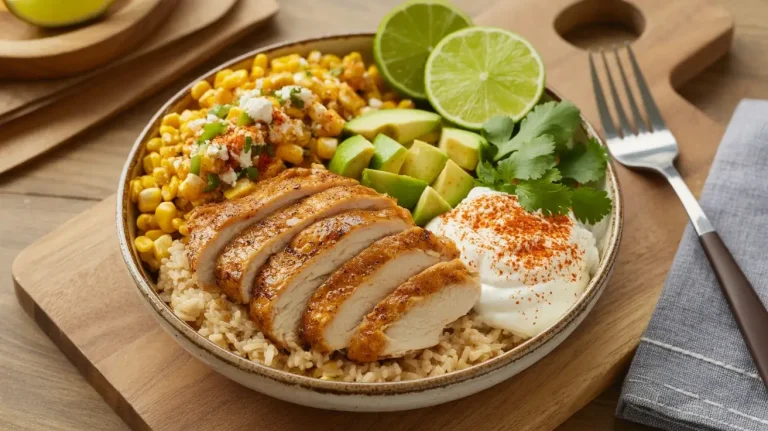Teres Major Steak
If you’re searching for a tender, flavorful, and surprisingly affordable steak cut, look no further than the Teres Major. Sometimes referred to as the “poor man’s filet mignon,” this cut offers a buttery texture and rich beefy flavor that rivals much more expensive options. With proper seasoning and a hot sear, Teres Major transforms into an indulgent centerpiece that’s perfect for weeknights or special occasions alike.
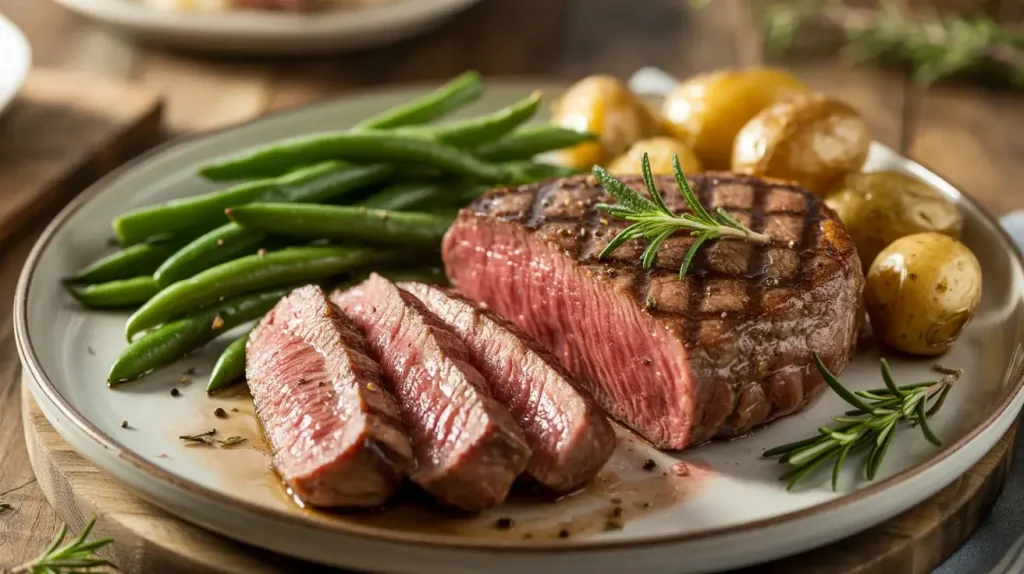
Why You’ll Love This Recipe
1. Tender and Juicy Texture
Teres Major is known for its natural tenderness—comparable to filet mignon but without the premium price. Cooked properly, it melts in your mouth with every bite.
2. Rich, Beefy Flavor
This cut comes from the shoulder area, bringing deep, meaty notes that carnivores adore. It’s robust without being overwhelming.
3. Quick and Easy to Prepare
You don’t need a fancy grill or complicated marinade. Just a hot pan, salt, pepper, and a little butter can turn this cut into a gourmet experience.
4. Cost-Effective Choice
Compared to ribeye or tenderloin, Teres Major is significantly more budget-friendly, making it ideal for feeding a crowd or enjoying steak more often.
5. Versatile Cooking Options
Whether seared in a cast iron skillet, grilled over charcoal, or roasted, this cut adapts beautifully to your favorite methods.
Ingredients
To create a tender and flavorful Teres Major Steak, you only need a few high-quality ingredients. This simple approach ensures maximum taste and juiciness.
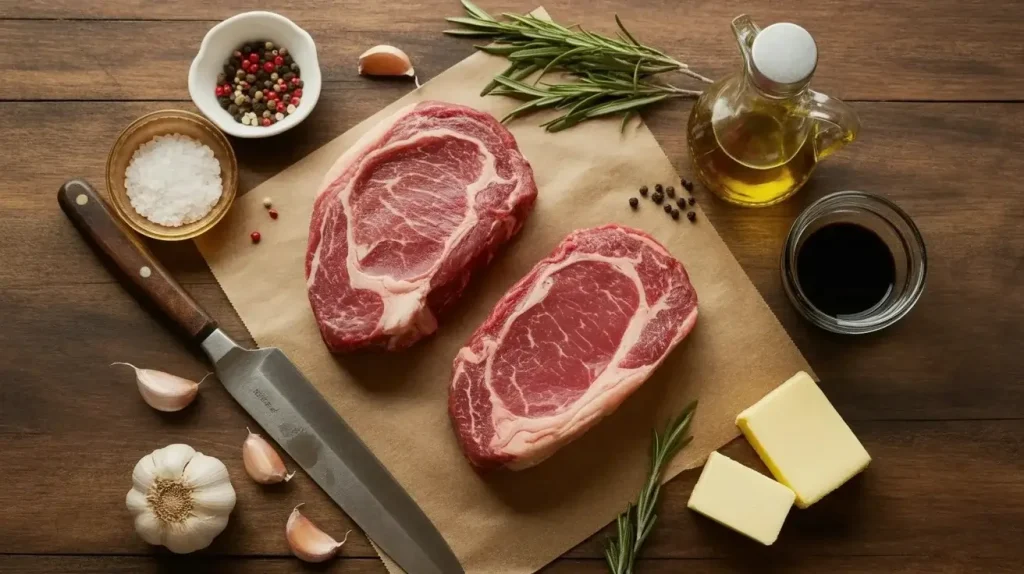
Essential Ingredients:
- 1–1.5 lb Teres Major steak
- 1 tsp kosher salt
- ½ tsp freshly cracked black pepper
- 1 tbsp high-smoke-point oil (like avocado or grapeseed)
Optional Add-Ons (for serving):
- 2 tbsp unsalted butter
- 2 cloves garlic, smashed
- Fresh rosemary or thyme sprigs
- Flaky sea salt for garnish
- Chimichurri, béarnaise, or garlic herb butter
Instructions
Use these simple, detailed steps to prepare a mouthwatering Teres Major Steak that’s tender, full of flavor, and has the taste of a high-end restaurant, all from the comfort of your home. Whether you choose a skillet, oven, or grill, this method ensures a flawless steak every time.
Step 1: Bring the Steak to Room Temperature
Take the steak out of the fridge 30–45 minutes before cooking. This ensures even cooking and a better sear.
Step 2: Pat Dry and Season the Steak
Use paper towels to remove any surface moisture. Generously season all sides with salt and pepper, pressing the seasoning into the meat.
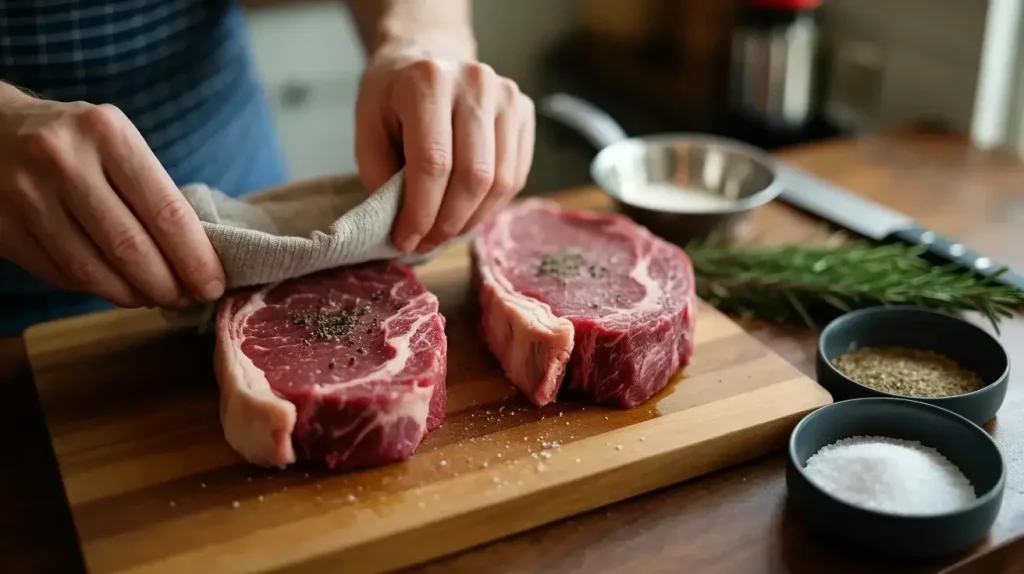
Step 3: Preheat Your Cooking Surface
Heat a heavy skillet (cast iron preferred) over medium-high heat until smoking hot. This helps develop a rich crust.
Step 4: Sear the Steak
Place the steak in the pan and let it sear untouched for 2–3 minutes per side. Rotate once to create an even crust without overcooking.
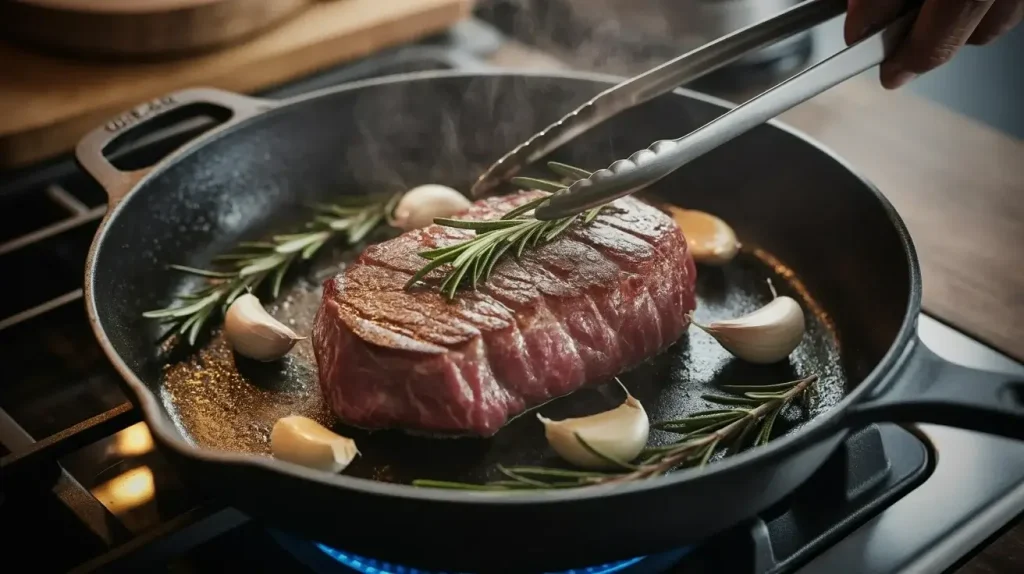
Step 5: Add Butter, Garlic & Herbs (Optional Basting)
Reduce heat slightly. Add butter, garlic, and herbs to the pan. Tilt and baste the steak for an extra burst of flavor and sheen.
Step 6: Check for Doneness
Use an instant-read thermometer:
- Rare: 120–125°F
- Medium-Rare: 130–135°F
- Medium: 140–145°F
Remove when it’s 5°F below your target to allow for carryover cooking.
Step 7: Let It Rest
Transfer to a plate and tent with foil for 5–10 minutes. This redistributes the juices for a moist, flavorful result.
Step 8: Slice and Serve
Slice against the grain into medallions and serve immediately. Garnish with flaky sea salt or your favorite finishing sauce.
Pro Tips and Variations
Pro Tips for Success
- Don’t overcrowd the pan—cook in batches if necessary.
- Use a meat thermometer for precise doneness.
- Resting time is key—don’t skip it.
Flavor Variations to Try
- Coffee and chili rub for a smoky, spicy crust
- Rosemary-garlic marinade for an herby twist
- Finish with blue cheese crumbles and a drizzle of balsamic glaze
Alternative Cooking Methods
- Sous Vide: Cook at 130°F for 2 hours, then sear.
- Grill: Direct heat for 3–4 mins per side
- Oven Roast: Sear first, then finish in oven at 375°F
Serving Temperature Tip:
Let steak rest until just warm to the touch. Overly hot meat releases too much juice when sliced.
Serving Suggestions
Perfect Side Dishes for Teres Major Steak
- Creamy mashed potatoes
- Garlic butter green beans
- Truffle mac and cheese
Flavorful Sauces to Complement Your Steak
- Classic red wine reduction
- Peppercorn cream sauce
- Chimichurri or Argentinian salsa criolla
Fresh Sides and Light Additions
- Arugula salad with lemon vinaigrette
- Roasted asparagus
- Grilled corn with lime and cotija
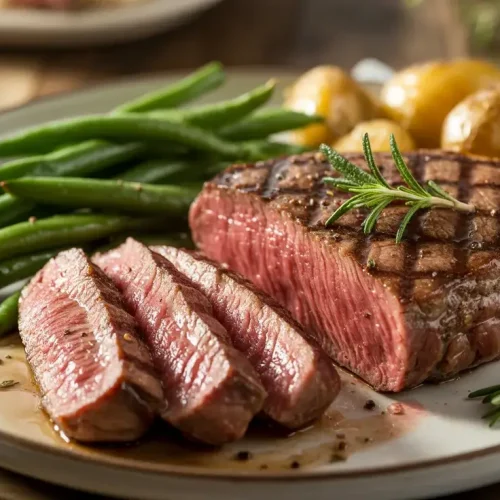
Teres Major Steak
Ingredients
Main Ingredients:
- 1.5 to 2 pounds of teres major steak (also known as petite tender or shoulder tender)
- 2 tablespoons of olive oil (used for searing and preserving the steak’s moisture)
- 2 teaspoons of kosher salt (enhances the beef’s natural flavors)
- 1 teaspoon of freshly ground black pepper (adds a subtle heat and depth)
- 1 teaspoon of garlic powder (gives an earthy, savory flavor)
- 1 teaspoon of onion powder (enhances the umami taste)
- 2 tablespoons of unsalted butter (for basting and richness)
- 2 crushed garlic cloves (infuse the butter with flavor)
- 2 to 3 sprigs of fresh rosemary or thyme (optional, for aromatic basting)
Optional Toppings:
- Coarse sea salt flakes (for a final texture and flavor boost)
- Fresh lemon wedges (to balance the richness of the steak)
- Chimichurri or garlic herb butter (for a bold and flavorful finish)
Instructions
Step 1: Bring the Steak to Room Temperature
- Take the teres major steak out of the fridge and let it sit at room temperature for 30 to 45 minutes. This helps the steak cook evenly and enhances its texture.
Step 2: Dry and Season the Steak
- Use a paper towel to pat the steak dry on all sides. This will help achieve a better sear. Then, season both sides generously with kosher salt, freshly ground black pepper, garlic powder, and onion powder. Let the seasoning sit on the steak for about 10 minutes to fully absorb.
Step 3: Preheat the Cooking Surface
- Heat a cast iron skillet or grill over medium-high heat until it's hot and just starting to smoke. Add 2 tablespoons of olive oil and swirl it to evenly coat the surface.
Step 4: Sear the Steak
- Place the steak in the hot skillet and let it sear without moving it for 3 to 4 minutes, or until a golden-brown crust forms. Flip the steak and sear the other side for an additional 3 to 4 minutes to get a nice even browning.
Step 5: Add Butter, Garlic, and Herbs (Optional Basting)
- Lower the heat to medium. Add 2 tablespoons of unsalted butter, crushed garlic cloves, and fresh rosemary or thyme to the pan. Tilt the skillet and spoon the melted butter over the steak repeatedly to infuse extra flavor and moisture.
Step 6: Check for Doneness
- Use a meat thermometer to ensure the steak is cooked to your liking:
- Rare: 120–125°F (49–52°C)
- Medium-rare: 130–135°F (54–57°C)
- Medium: 140–145°F (60–63°C)
- This steak is best when cooked to medium-rare for maximum tenderness. Remove it from the pan once it reaches your desired temperature.
Step 7: Let the Steak Rest
- Transfer the steak to a cutting board and cover it loosely with aluminum foil. Let it rest for about 10 minutes to allow the juices to redistribute, ensuring a juicy steak.
Step 8: Slice and Serve
- Slice the steak thinly against the grain for the most tender results. Serve immediately with your preferred sides or sauces (check Section 6 for suggestions).4o
Notes
Nutrition Information (Per Serving):
- Calories: 340 kcal
- Total Fat: 20g
- Saturated Fat: 8g
- Cholesterol: 90mg
- Protein: 38g
- Carbohydrates: 2g
- Fiber: 0g
- Sugar: 0g
- Sodium: 250mg
Conclusion
Teres Major steak proves that you don’t have to splurge to enjoy a gourmet, steakhouse-worthy experience at home. With minimal prep and bold flavor, it’s perfect for impressing guests or treating yourself to something truly satisfying. Once you try it, you’ll wonder how this cut stayed under the radar for so long.
FAQs
1: Is Teres Major a good steak?
Absolutely. It’s one of the most underrated tender cuts, offering great texture and flavor without a high cost.
2: How do you cook a Teres Major steak?
The best way is to sear it on high heat and finish with butter basting. You can also sous vide it for precision.
3: What is the closest cut to beef tenderloin?
Teres Major is often considered the second most tender cut after tenderloin, making it the closest in texture.
4: How tough is beef shoulder steak?
Most shoulder cuts are tough, but Teres Major is an exception—it’s incredibly tender when cooked right.
5: Why is it called Teres?
“Teres” comes from the Latin word for “rounded,” describing the shape of the muscle.
6: What is the toughest steak to eat?
Cuts like skirt steak or brisket can be tough if not cooked properly. Teres Major is far from tough.
7: How to cut a Teres Major steak?
Let it rest, then slice thinly against the grain to maximize tenderness.






